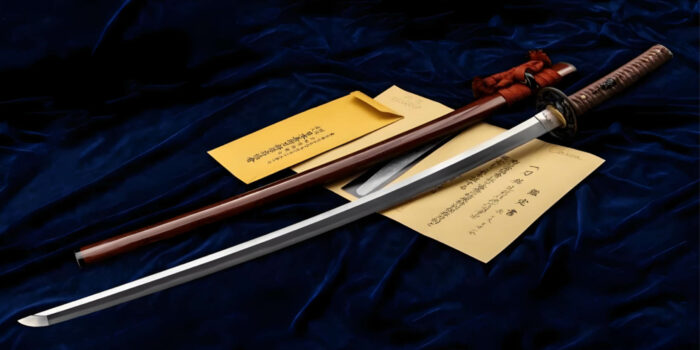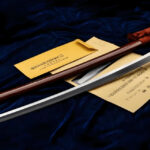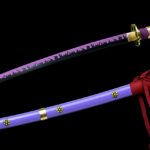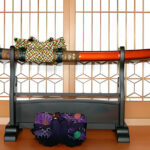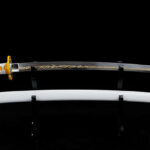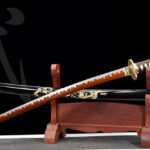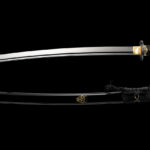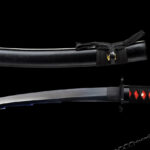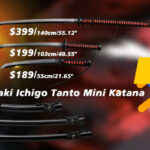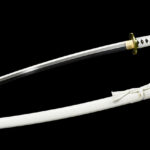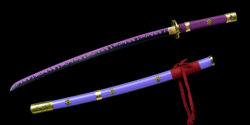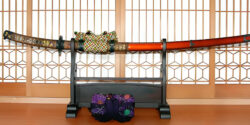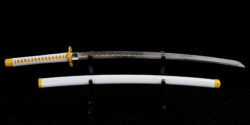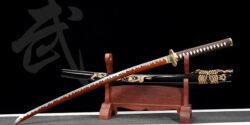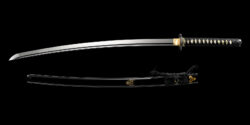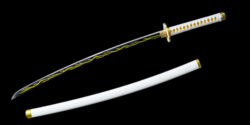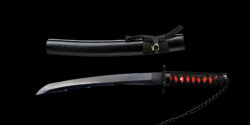Essence of Japanese Sword Craftsmanship: Shirasaya vs. Koshirae
Japanese swords are renowned worldwide for their artistry and functionality, embodying the culture and traditions of the samurai. Among these revered weapons, the Katana stands out for its distinct blade and exquisite craftsmanship. However, the true allure of Japanese swords lies not only in the blade itself but also in the various types of fittings that protect and display it. Shirasaya and Koshirae are two distinct forms of Japanese sword fittings, each with unique features and purposes. Here, we’ll delve into their differences to help collectors and enthusiasts appreciate their importance in Japanese sword culture.
What is a Shirasaya?
Shirasaya refers to a minimalist wooden scabbard crafted for long-term storage of the Katana blade. Typically made from honoki wood, known for its low resin content, Shirasaya is specifically designed to protect the blade from moisture and corrosion. This bare, unadorned design ensures that the blade is well-preserved, ideal for collectors who need a durable and breathable storage solution. Unlike Koshirae, Shirasaya has no metal fittings or lacquer, offering a “natural” aesthetic that reflects the simplicity and elegance of Japanese craftsmanship.
Shirasaya is sometimes seen as the “pajamas” of the sword, a restful enclosure that maintains the blade’s condition when not in use. With its clean lines and natural wood texture, it serves as a protective tool rather than a decorative display piece. This unique feature makes Shirasaya highly valued by collectors who prioritize blade preservation.
What is Koshirae?
Koshirae is the complete, fully adorned exterior fitting of the Katana, including the handle (tsuka), scabbard (saya), and handguard (tsuba). Unlike the minimalist Shirasaya, Koshirae is known for its ornate designs and lacquered finishes, symbolizing the sword’s dual role as both a weapon and a status symbol. The scabbard is often lacquered and decorated with metal ornaments like iron, copper, or silver, adding a touch of elegance to the sword while providing protection for practical use.
Koshirae has deep cultural significance, often reflecting the identity and taste of the owner. In traditional Japanese culture, Koshirae was worn by samurai as part of their formal attire, emphasizing its role as a “formal dress” for the Katana. The craftsmanship of Koshirae is highly esteemed, with its intricate patterns and vibrant colors showcasing both functionality and aesthetics.
Key Differences Between Shirasaya and Koshirae
1. Function
Shirasaya: Primarily used for long-term storage and protection, focusing on preserving the blade from oxidation. It is not designed for combat or regular display, making it ideal for storage.
Koshirae: Suitable for daily wear, formal exhibitions, and practical use. It balances protection, display, and function, making it a versatile choice for various applications.
2. Materials and Craftsmanship
Shirasaya: Made from untreated honoki wood, it is free from chemical treatments to prevent reactions with the blade. This simplicity makes it perfect for preserving the blade’s integrity.
Koshirae: Constructed with lacquered wood and adorned with metal fittings, Koshirae enhances the sword’s aesthetic value while offering durability for practical use.
3. Design
Shirasaya: Characterized by its minimalist, undecorated look that maintains the natural wood grain. This makes it an understated yet elegant storage option.
Koshirae: Known for its ornate decorations and vibrant colors, often symbolizing the sword owner’s status and personality. Koshirae combines function with visual appeal.
4. Preservation
Shirasaya: Allows airflow around the blade, reducing the risk of rust and ensuring long-term preservation.
Koshirae: Its sealed design, though protective, can lead to rust if stored for prolonged periods, making it less suitable for long-term storage.
5. Occasion of Use
Shirasaya: Best used for swords that are not frequently displayed or used, offering maximum protection during storage.
Koshirae: Ideal for wearing, display, and practical applications, combining both functional and decorative elements.
Complementary Roles of Shirasaya and Koshirae
While Shirasaya and Koshirae serve different purposes, they complement each other in Japanese sword preservation. Many collectors use Shirasaya for storage and switch to Koshirae for display or ceremonial purposes. This versatility allows enthusiasts to protect and display their swords in ways that best suit the occasion.
Hand Forged Japanese Shirasaya Katana Sword: A Collector’s Dream
The Hand Forged Japanese Shirasaya Katana Sword, crafted from 1095 high-carbon steel and clay-tempered for optimal sharpness, is a testament to the craftsmanship involved in creating traditional Japanese swords. Its mirror-bright blade not only reflects the skill of the swordsmith but also the dedication to maintaining historical accuracy. This Shirasaya Katana, with a unique octagonal handle and scabbard design, combines elegance with functionality. Enhanced by water buffalo horn fittings, it offers both durability and refined aesthetics, making it an ideal piece for collectors and practitioners.
SHOP NOW
Hand Forged Japanese Shirasaya Katana Sword 1095 Steel Clay Tempered Mirror-Like Bright Blade
Hand Forged Japanese Shirasaya Katana Sword 1095 Steel Clay Tempered Mirrorlike Bright Blade
Don’t Miss Black Friday Deals on Shirasaya Katana Swords
This Black Friday, seize the opportunity to own a Shirasaya Katana crafted from premium 1095 steel with a stunning mirror finish. The minimalist Shirasaya design embodies elegance, showcasing the blade’s beauty without distraction. Perfect for collectors and enthusiasts, this katana is both a functional weapon and a beautiful display piece, ideal for those passionate about Japanese sword history and samurai culture.
Whether you’re drawn to the simplicity of Shirasaya or the decorative appeal of Koshirae, understanding their unique roles helps you preserve and display your sword collection with pride. Add this exquisite katana to your collection today, and let it reflect both the art of sword-making and the timeless spirit of the samurai.
Katana:https://en.wikipedia.org/wiki/Katana
